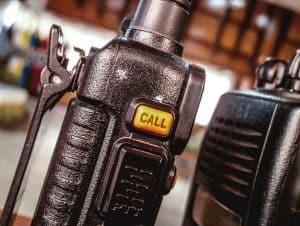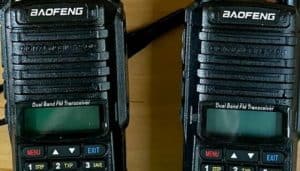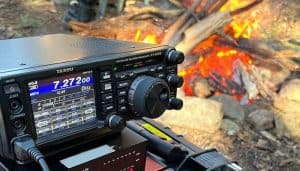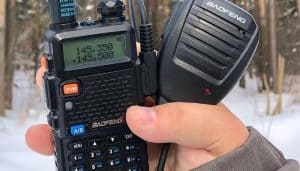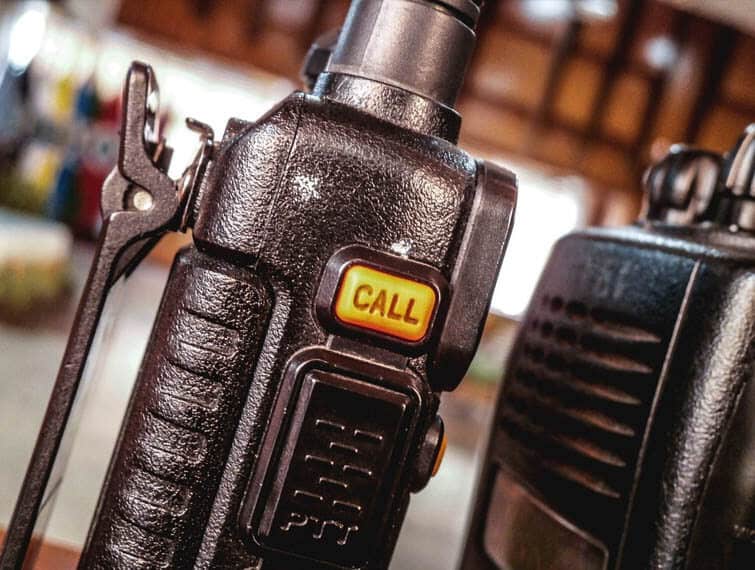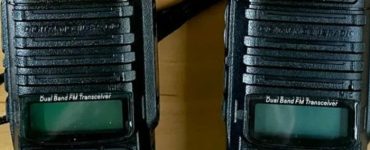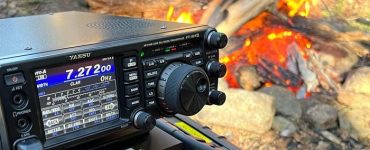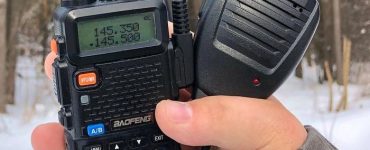There is a wide variety of ham radio frequencies that you can use for communications. These devices make use of electromagnetic radiation just like other wireless technologies. Ham radios can make use of digital data, Morse code, and voice transmission. These transmissions can be made worldwide with the help of antennas, receivers, and transmitters. That means non-hams that have radio scanners or receivers can be used to listen in to the transmissions made by ham radios.

FCC Frequency Regulation
Electromagnetic signals are broken down into a spectrum to help you determine which frequency you can use. The spectrum has been categorized and reserved by the FCC to designate which devices can use each part of the frequency spectrum.
Please take note of the following:
- VLF (Very Low Frequency) – for maritime radio communications
- LF (Low Frequency Band) – also for the operation of maritime radio navigation
- MF (Medium Frequency Band) – for AM radio as well as aviation radio and navigation.
- HF (High Frequency Band) – used by shortwave radio devices
- VHF (Very High Frequency Band) – used by FM radio and VHF television
- UHF (Ultra High Frequency Band) – designated for 4G, Wi-Fi, GPS, mobile phones, and UHF TV.
- SHF (Super High Frequency Band) – designated for Wi-Fi and satellite communication.
- EHF (Extremely High Frequency) – used by satellite communications and radio astronomy.
When you look at any ham radio frequencies list, you will see that the frequencies allocated for these radios are actually part of other allocated frequencies. Each country has a local Federal Communications Commission (FCC).
The FCC is a board of commissioners that has been mandated to regulate broadcasting activities in each country. Internationally, it is the International Telecommunication Union (ITU) that regulates and oversees the different radio spectrums used globally.
What Frequency Do Ham Radios Use?
Note that when you look at the available frequency bands listed above, there is no specific and single band designated as ham radio frequencies. That is because the FCC has allocated a rather wide range of frequencies for hams or the amateur radio spectrum.
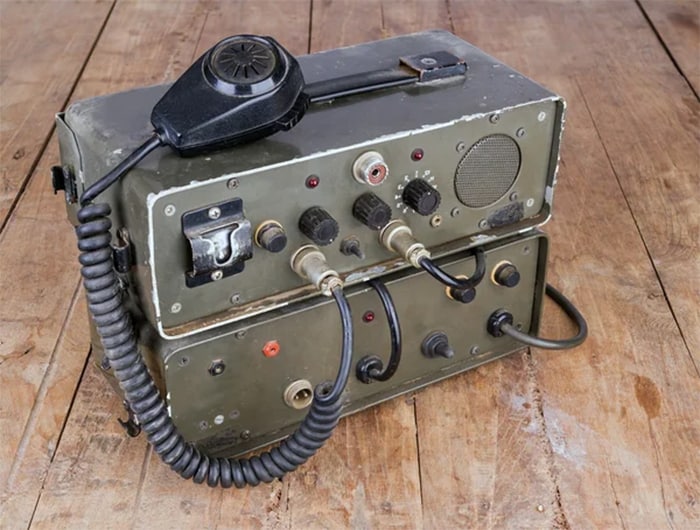
What Are Amateur Radio Frequencies?
Amateur radio is another name for ham radio. That means ham radios use radio frequencies that aren’t designated for commercial purposes.
These frequencies are used for:
- Wireless experimentation
- Emergency communication
- Radiosport
- Private recreation
- Self-training
- Personal communications
The next question is which radio frequencies or band allocations have been allotted or designated for amateur radio/ham radios?
Fun Outdoor Quiz
Ham radio frequencies start at 1.6 MHz, which is an AM radio band, and the allocated spectrum ends at 1240 MHz. As you can see, it is a rather wide set of frequencies allotted for hams.
This range actually includes a couple of radio frequency bands as well as UHF and VHF. Within that wide range there are a lot of popular ham radio frequencies. However, do take note that there are pros and cons to these frequency bands, particularly the very high frequency (VHF) and ultra-high frequency (UHF) bands.
Pros and Cons of UHF Band
UHF starts at 300 MHz and extends all the way to 3 GHz. The designated ham radio frequencies within the UHF band starts from 420 MHz to 450 MHz. As you might recall from the information provided earlier, UHF is allocated for 4G signals, WiFi, GPS, and mobile phones.
Since this is a rather busy frequency band, expect a lot of potential interference. Note that UHF signals have very short wavelengths. That means buildings or even your own body can serve as interference.
However, on the plus side, UHF is a wide frequency range and it has a high audio signal quality. On top of that, it also has a high bandwidth occupation.
Pros and Cons of VHF Band
This is one of the more popular ham radio frequencies and it falls into the 30 MHz to 300 MHz. Why is it a popular frequency band? It is because VHF is very reliable. On top of that, it is a frequency that doesn’t have lots of interference and noise.
The reserved ham radio band in VHF is 144 to 148 MHz. When you use VHF, you can use line of sight communication with another ham radio. One way to establish that line of sight is to use a repeater antenna to move the radio signal around from one point to another or from one ham radio to others.
There are repeaters that have been setup in many parts of the country and all over the world. They receive transmissions and rebroadcast those transmissions, which basically extends the reach of ham radios.
Many country clubs and radio clubs have their own repeaters and you can sort of piggy back on them. As you can imagine, they can be very useful during emergencies when phone and internet communication is down.
2 Meter Ham Radio Frequencies
This is also known as the 2-meter amateur radio band. It is actually part of the VHF spectrum described above. It spans from 144 MHz to 148 MHz. That range is actually the band allocated by the ITU in North and South America as well as in Oceania and Asia.
There is a different band designated for Russia, Africa, and Europe. In these regions, the allocated 2 meter ham radio frequencies are from 144 MHz to 146 MHz. The telecommunications that are conducted in the 2 meter band is usually conducted only within about 100 miles.
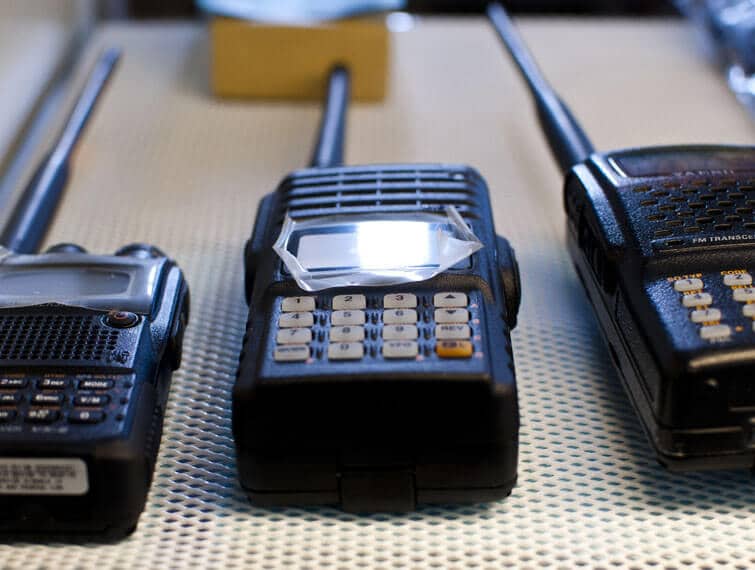
Best Ham Radio Frequencies for Long Distance Communication
If you’re just starting as a newbie ham, a 100 mile range will already sound good. However, as you gain more experience, you may want to experiment with long range or long distance communications. So, which frequencies should you use?
Line of sight frequencies are best used for communicating over short distances. These shorter range frequencies are used by TV and FM radio stations and have a range of 40 to 50 miles.
The 2 meter ham band and the line of sight frequencies aren’t the ham radio channels you should use for long-distance coms. To know which one you should use, it actually depends on whether you’re communicating during the day or night time.
If you’re looking for long distance channels during the day time, you should scan from the 15 to the 27 MHz band. Things change at night so when the sun goes down switch to any frequency within the 1.6 to 15 MHz band.
If you’re familiar with short wave radio, the aforementioned frequency bands are known as the short wave bands.
How Far Do Ham Radios Reach
Ham radio is a hobby that can be used to communicate with others in a range of distances. It is important to know how far the radios will reach so that you do not take them onto a plane or boat, as these are places where radios cannot transmit.
The optimal range for ham radios is 10 miles. This can be lengthened by using higher frequency bands, but the more high-frequency waves you transmit on, the higher the power requirements. The more power there is, the more expensive it becomes to run your equipment. The lower the frequency, the easier it is to transmit long distances with low power.
Ham Radio vs Shortwave Radio
The amateur radio (ham) and shortwave radios differ in the frequency range they occupy. Amateur radio operates with frequencies between approximately 20 and 200 megahertz (MHz), whereas shortwave broadcasts can span from about 1 to 30 MHz.
Shortwave is a type of long-distance broadcast that has been used since the 1920s. It’s most commonly associated with events like international sporting events or disaster relief operations.
Both have their own advantages and disadvantages, but many people find that they prefer one or the other based on which one is better suited to their needs.
Uses of Ham Radio
There are many different uses for ham radio. One of them is to create communities around the world. It has been said that there are more than 2,000 active ham radio operators around the world who communicate with one another every day.
These operators live in areas where it’s difficult or impossible to make phone calls, including deserts, jungles, and mountains. Ham radios can be used to communicate during emergencies.
Radio hams are able to help the police coordinate their responses, share information about incidences that are taking place, and assist with other communications needs. Ham radio frequencies are less crowded than phone lines which makes it easier to have a clear conversation.
Conclusion
The ham radio frequencies that you will use will depend on the time of day and what type of communications you want to try. You will use different frequencies for day or night time transmissions and for long or short range communications.


